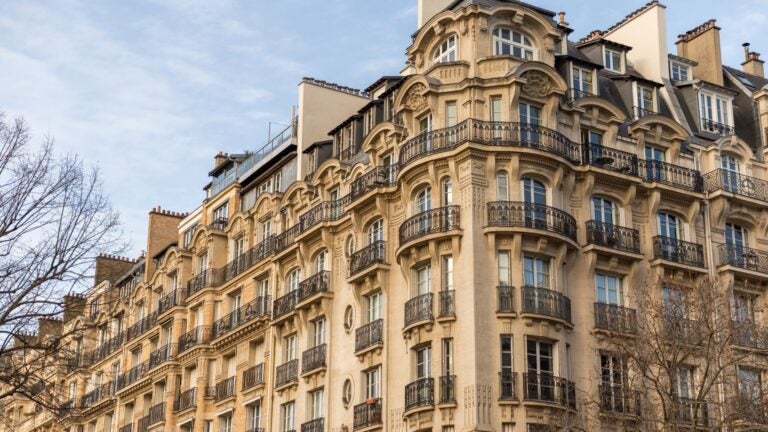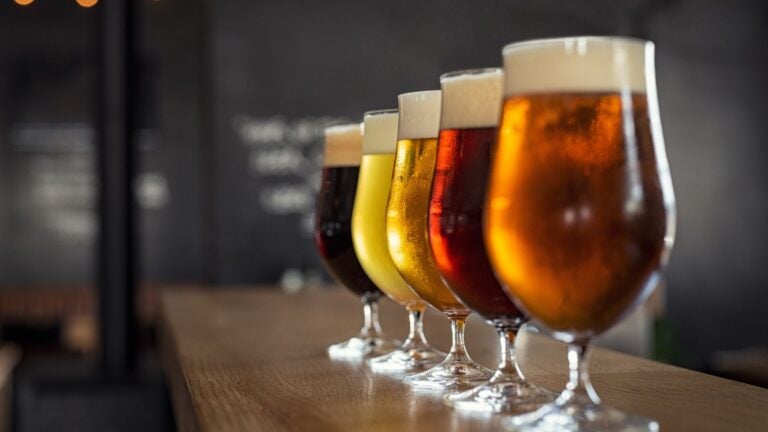What to buy in Europe: Souvenirs and helpful tips
Find the best European souvenirs, unique gifts, and shopping tips by country. Learn what to buy in Europe and where to get the best deals.
Come for the culture, stay for the shopping. Europe is packed with brands, makers, and markets worth exploring.
In this guide, we’ll walk through the best things to buy across the continent, how to save money while you shop, and where to find the most interesting local products in each country.
And since shopping days often turn into full-day adventures across cities and markets, having a reliable mobile internet in Europe is essential. Consider an unlimited data travel eSIM, which makes it easy to navigate, compare prices, and explore without missing a beat.
The best souvenirs and typical products from each country
The best Europe souvenirs are those that are authentic and tell a story. We’ve rounded up the most popular souvenirs from each country, so you can discover how to plan a Europe trip, do some shopping, and come back home with gifts that aren’t just fridge magnets.
What to buy in France 🇫🇷

France is known for its effortless elegance, gourmet culture, world-famous fashion scene, and one of the most romantic places in the world to propose. Here’s how to bring some of that charm home with you.
- Luxury perfumes: Visit Fragonard in Grasse or its Paris boutiques. Founded in 1926, it remains a family‑run perfumery rooted in local flowers and craft. Also consider Chanel and Dior, which are widely available in Paris flagship stores and often with exclusives.
- French pharmacy skincare: Brands such as La Roche-Posay, Caudalie, and Bioderma are staples in local pharmacies. Choosing a shop away from major tourist hubs often gives better service and local stock.
- Maille is a historic pick for mustard. Founded in 1747 in Paris and known for premium mustard, vinegar and condiments. Their boutique in Dijon (Rue de la Liberté) is iconic for mustard lovers.
- Traditional French soap: Look for soaps from Provence or Marseille, especially in artisan markets. While not always a “brand” in the luxury sense, shops specialising in “Savon de Marseille” or regional soap‑makers offer authentic options.
- Artisan cheeses & wine: Regional producers rather than large supermarkets make a difference. For example, in Bordeaux or Champagne, visiting a local cellar or fromagerie gives access to fresher stock and genuine regional labels.
Expert shopping tips:
- In perfume boutiques like Fragonard, you can ask about “factory tours” or historic displays (Fragonard offers a free tour in Grasse).
- At the Maille boutique in Dijon, you’ll find unusual mustard varieties (truffle, wine‑infused) not easily found elsewhere.
- For cheeses and wines: check origin/region labels, and ask the seller about transport across borders (cheeses may require special packaging/conditions).
What to buy in Italy 🇮🇹
Italy is renowned for its rich craftsmanship, bold flavours, and timeless style. You can also find the best food in Italy – pasta, truffle-infused olive oils, and wines. When you’re thinking of what to buy in Europe and pack something for home, here’s a good list:
- Leather goods: Visit the Scuola del Cuoio (Leather School) in Florence, located inside the Santa Croce complex. This artisan workshop and boutique is known for its handcrafted leather items and traditional methods passed down through generations.
- Murano glass & Venetian masks: Head to Murano, just off the coast of Venice, to find glassblowers like Venini, Seguso, or Barovier & Toso, operating since the 13th century. For masks, stop by Ca’Macana, a workshop known for crafting historically accurate Venetian masks.
- Olive oil & balsamic vinegar: Look for small-scale producers in Tuscany for extra virgin olive oil, and Modena for authentic balsamic vinegar. Seek out bottles labeled Aceto Balsamico Tradizionale di Modena. These are aged for a minimum of 12 years and protected by PDO certification.
- Food souvenirs: Bring home regional specialities like truffle pasta, torrone nougat, or amaretti cookies. Visit markets such as Eataly in Rome or Mercato Centrale in Florence for a wide range of gourmet items from across Italy.
Expert shopping tips:
- In Florence, you can watch artisans at work at the Scuola del Cuoio and even personalise items with initials or embossing.
- When shopping for Murano glass, ask for a certificate of authenticity. Genuine pieces will be priced higher but come with historical value.
- In Modena, consider a tasting at Acetaia Pedroni or Giusti, two of the oldest producers of balsamic vinegar.
What to buy in Spain 🇪🇸

Spain is a treasure trove of interesting souvenirs to bring home. Each region of Spain is rich in history, traditional craftsmanship, and great regional pride. Here’s how to shop for authentic European souvenirs from Spain.
- Olive oil & jamón ibérico: Seek out extra virgin olive oil from Andalusia (Jaén or Córdoba) and top-tier jamón ibérico de bellota from producers in Huelva or Guijuelo. Look for labels with a Denominación de Origen (DO) seal for authenticity.
- Leather goods: Visit artisan shops in the region of Ubrique, one of Spain’s historic leather-making centers. If you’re in Seville, explore the area around Calle Sierpes for Andalusian-made belts, wallets, and bags.
- Ceramics & crafts: In Toledo, look for damascene jewellery. Those are distinctive gold and silver pieces inlaid into blackened steel. They are crafted using centuries-old techniques. Andalusian towns like Granada and Córdoba are known for colorful hand-painted ceramics.
- Food souvenirs: Pick up saffron from La Mancha, pimentón de la Vera (smoked paprika), or artisanal vermouth. For a gourmet selection, stop by speciality shops like Club del Gourmet in El Corte Inglés or visit neighborhood markets.
- Flamenco-inspired gifts: Embroidered shawls, castanets, and hand-painted fans are cultural staples, especially in southern cities like Seville.
Expert shopping tips
- In Toledo, ask artisans to demonstrate the damascene process, as some offer mini-tours or custom designs.
- For olive oil, ask for early-harvest bottles (often labeled “cosecha temprana”) for more intense flavor.
- When buying jamón, shops like Cinco Jotas or Enrique Tomás offer vacuum-sealed packaging for travel.
What to buy in Portugal 🇵🇹
Portugal is a treasure trove of authentic Europe souvenirs, local traditions, and handcrafted goods. Here’s how you can find items that tell a story.
- Cork products: As the world’s top producer of cork, Portugal is the home to one-third of all the world’s cork oak trees. Portuguese gift shops offer cork items beyond just plugging wine bottles. Look for tote bags, wallets, and home accessories at specialty shops like Pelcor or Cork & Co, both focused on sustainable local design.
- Azulejos & ceramics: Hand-painted tiles and traditional pottery are iconic Portuguese souvenirs. Shops like Fábrica Sant’Anna in Lisbon offer rich heritage craftsmanship. Their azulejos have been handmade since the 18th century.
- Port wine: Wine bottles from the Douro Valley make excellent gifts. Visit cellars like Taylor’s or Graham’s for tastings and a chance to choose limited-edition bottles with regional distinction.
- Ginjinha: This sour cherry liqueur is a local tradition in Lisbon. Try A Ginjinha, a historic standing-room-only bar that has been serving it since 1840
- Embroidered linens: Explore local artisans and markets in Madeira and mainland Portugal for hand-stitched tablecloths, towels, and decorative linens. These make thoughtful, lightweight European souvenirs.
Expert shopping tips
- Ask artisan tilemakers like Fábrica Sant’Anna about custom designs. You might get lucky and find small pieces ideal for packing or gifting.
- Visit grocery stores like Pingo Doce or Continente for locally packaged foods, chocolates, and inexpensive gifts like sardines in designer tins or Portuguese hot chocolate mixes.
- Look for “Made in Portugal” tags, especially on cork and embroidered goods, to avoid imported replicas.
What to buy in Germany 🇩🇪

Germany is renowned for its precision craftsmanship, rich culinary and beverage traditions, and artisanal heritage. If you aren’t settling for a fridge magnet, here are some great Europe souvenir ideas to bring back home.
- Erzgebirge wooden ornaments & Schwibbogen candle arches: The Ore Mountains (Erzgebirge) region is famed for wood‑carving traditions and the candle‑arch Schwibbogen, which dates back to miners’ rituals.
- “Ampelmännchen” Berlin traffic‑light motif goods: In Berlin, you’ll find the East German pedestrian signal figure used on key‑chains, bags, and prints. It’s a quirky local design souvenir rooted in history.
- Fine stationery & artisanal brushes: For a subtler souvenir, brands like Redecker hand‑craft brushes and wood goods in traditional workshops, and are rated by travellers as unexpected gems.
- Speciality regional gourmet items: Look for items such as Hessian clay jugs (“Bembel”) for apple cider, or premium mustards and condiments from places like Regensburg.
- Berlin art‑market finds & craft studios: In Berlin’s art markets, you’ll find unique handmade pieces that show the modern face of German artisan heritage.
Expert shopping tips
- Museum gift shops offer hidden gems: Places like the Bauhaus Archive in Berlin often carry limited-edition items from local designers.
- Train station shops aren’t always generic: At spots like Heimatwerk (Munich) or regional markets in Cologne, you can find last-minute souvenirs made by local artisans.
- Use Google Maps to scout artisan shops: Search in German (e.g., Handwerk, Manufaktur, Werkstatt) and zoom into neighborhoods to find small craft studios that are often overlooked in English-language guides.
What to buy in Greece 🇬🇷
Everyone knows about Greece’s amazingly rich history, unmatched natural beauty, and stellar cuisine. However, Greek contemporary craftsmanship should not be overlooked.
- Olive oil & gourmet foods: High-quality extra virgin olive oil from Crete or Kalamata makes a meaningful (and delicious) gift. Look for brands like Navarino Icons, which offer small-batch oils and other Peloponnesian goods, beautifully packaged for gifting.
- Natural skincare: Greek pharmacy staples like Korres and Apivita use native ingredients such as olive leaf, mountain tea, and wild herbs. These brands are widely available in pharmacies, and many locations carry exclusive items or gift sets.
- Leather sandals: Athens is home to workshops like Melissinos Art, known as the “poet sandal maker.” Their shop has served locals and celebrities since the 1920s. Each pair is handmade and can be customized on the spot.
- Ceramics & olive wood crafts: On islands like Sifnos or in towns like Arachova, you’ll find family-run studios producing traditional pottery and carved olive wood kitchen tools. Kubara, based in Athens, curates contemporary Greek home goods made by local artisans.
- Jewelry & accessories: If you’re looking for something beyond a tourist stall with mass-produced items, consider exploring boutique designers like Zeus + Dione, which create elegant, mythology-inspired pieces using materials such as silk, bronze, and enamel.
Expert shopping tips
- Ask about the harvest date when buying olive oil — fresher oils are more aromatic and flavorful. Dark glass or tin packaging helps preserve quality.
- Visit laikí markets (weekly open-air markets) to shop alongside locals for herbs, honey, and wooden utensils at much better prices than tourist shops.
- In Athens, skip the Plaka trinket stores and walk through Psiri or Exarchia to find independent designer boutiques and galleries featuring local talent.
What to buy in the United Kingdom 🇬🇧
The UK offers a blend of rich history, heritage, craftsmanship, and modern design. It’s perfect for bringing home something meaningful and offers the best Europe souvenirs. Here are some of the ideas on what to buy in Europe and how to capture your happy memories:
- Tea and accessories: Skip generic supermarket boxes and go for blends from Fortnum & Mason, Whittard of Chelsea, or Postcard Teas in London. These historic or specialty shops offer curated blends, limited editions, and giftable tins rooted in the rich tradition of British tea culture.
- Luxury biscuits and sweets: Brands like Biscuiteers (hand-iced in London) and Prestat (chocolatier to the Queen) offer beautifully boxed treats made in the UK. Great for gifting or enjoying with your tea.
- Wool scarves and cashmere: Look for heritage brands like Johnstons of Elgin (Scotland) or the Tartan Blanket Co., which produce high-quality accessories using locally sourced wool. Visit Liberty or Selfridges for a curated collection from across the UK.
- Design-led home goods: The London Transport Museum Shop and V&A Museum Shop are full of high-quality, design-forward souvenirs. You can choose from art prints to ceramics and textiles inspired by British design history.
- Books, notebooks, and stationery: Stores like Daunt Books and Present & Correct are known for their curated selections of British authors, vintage maps, and beautifully made paper goods.
Expert shopping tips
- For the best tea experience, buy loose leaf and ask about brewing times. Shops like Postcard Teas specialize in helping you pair tea with your mood and season.
- The V&A and Tate Modern shops are go-to spots for souvenirs with design integrity, especially if you’re avoiding Union Jack refrigerator magnets.
- Local markets (like Spitalfields or Camden Passage) often feature British makers selling handmade jewelry, ceramics, and fashion. Shopping there is an unmissable experience.
What to buy in the Netherlands 🇳🇱

The Netherlands is a great place to look for some of the best souvenirs in Europe, especially if you like pieces tied to daily Dutch life: cycling culture, canal traditions, and bold design. Many of the most unique Europe souvenirs here aren’t luxury items but practical, well-made things you’ll actually use. Local markets are the best starting point, especially in cities where producers still sell directly to consumers.
- Delftware tiles & miniatures: Real Delft tiles, often depicting canals, ships, or florals, make compact, display-ready gifts. For authentic pieces, look for Royal Delft or De Koninklijke Porceleyne Fles studios.
- Cheese from regional makers: Instead of generic Gouda cheese wheels, try farm-made boerenkaas or aged varieties from Alkmaar markets. Some stalls let you taste multiple ages before sealing your pick for travel.
- Dutch cycling accessories: Brands like Basil and Veloretti sell stylish bike bells, pannier bags, and lights. These practical gifts feel unmistakably Dutch.
- Stroopwafels baked on the spot: Fresh stroopwafels from local markets like Albert Cuypmarkt or De Hallen are incomparable to packaged ones. You can also find creative variations (coffee caramel, speculaas spice).
- Textiles inspired by canal houses: Small boutiques in Amsterdam’s Jordaan district sell woven tea towels, prints, and table linens with subtle canal motifs. Perfect if you’re looking for something lightweight, easy-to-pack, and very local.
Expert shopping tips
- For genuine Delftware, ask to see the backstamp. Workshops often explain the artist and pattern history if you show interest.
- At local markets, buy cheese from stalls with “proef gratis” signs. Those sellers usually offer farm-direct products you won’t find in supermarkets.
- For cycling accessories, check small fietswinkels instead of tourist areas. Locals buy there, and prices are often 20–30% lower.
What to buy in Switzerland 🇨🇭
Many of the most unique European souvenirs from Switzerland are produced in family-owned workshops, Alpine farms, and local markets, where producers still sell their own goods. Here’s what to buy in Europe and look for:
- Alpine herbal products: Apothecaries in Graubünden and Valais carry herbal balms, teas, and syrups made from mountain plants like arnica, gentian, or alpine mint.
- Artisanal Swiss chocolate: Look for bean-to-bar makers such as Läderach, Max Chocolatier (Lucerne), or small chocolatiers at Zürich’s Bürkliplatz market.
- Traditional cowbells (Trychle): Hand-forged bells from Emmental or Appenzell make unique souvenirs and distinctive décor pieces. Each region has its own sound and metalwork pattern.
- Carved wooden items: Small studios in Brienz (the woodcarving capital) produce hand-carved figures, spoons, and decorative boxes using local wood.
- Swiss wool and knitwear: Rural cooperatives in the Bernese Oberland and Toggenburg sell scarves and socks made from native sheep breeds, often dyed with natural pigments.
Expert shopping tips
- Buy chocolate at weekly markets, not Bahnhofstrasse shops. Small makers sell limited batches there.
- Ask for a “Klangprobe” when choosing cowbells. Locals pick them by tone, not size.
- Look for village cooperatives (“Heimatwerk”) for authentic wood and wool pieces instead of souvenir stores.
What to buy in Austria 🇦🇹
Austria is one of the top countries in Europe for souvenir shopping, particularly if you enjoy traditional crafts, elegant food gifts, and beautifully crafted seasonal items. Cities like Vienna and Salzburg are known for having some of the best Christmas markets in Europe, which means plenty of unique finds to bring back on your flight home.
- Viennese hand-blown Christmas ornaments: Look for miniature architectural motifs with intricate design (Stephansdom, Secession dome) made by local artists in Vienna’s 7th district rather than mass products.
- Small-batch dark chocolate: Zotter’s experimental flavors get attention, but tiny chocolatiers in Graz and Krems make excellent single-origin bars and ganache slabs you rarely see abroad.
- Wachau apricot products: Family producers sell apricot nectar, jam, and distillates (“Marillenschnaps”) that are hyper-regional and surprisingly refined.
- Bregenzerwald textiles: Cooperative-run mills in Vorarlberg produce minimalist wool throws and kitchen linens, often dyed with natural pigments.
- Handmade ceramic “Gmundner Keramik” in rare patterns: Beyond the green-flamed design, look for blue or grey fishbone motifs that are harder to find and make unusual souvenir options.
Expert shopping tips
- Go to the 7th-district antique shops on Thursdays. That’s when they unpack boxes from estate clear-outs, so you can grab pieces before they ever reach stores.
- At the Naschmarkt flea market, buy from stalls with handwritten tags. These are usually hobby collectors, not resellers.
- Choose workshops that pack Christmas ornaments in shredded hay. It’s an old Austrian packing method, and locals trust it more than bubble wrap.
Europe souvenir shopping: Tax rules and VAT refunds
If you’re planning meaningful souvenir shopping in Europe, understanding how VAT refunds work can help you save a surprising amount, especially on higher-value purchases. Travelers from outside the EU can reclaim VAT on qualifying buys, but the rules change slightly by country, so it’s worth knowing the basics before you start browsing.
- Only stores that participate in tax-free shopping can issue VAT refund forms. Look for the sign near the cash register.
- Each purchase must meet the country’s minimum spending threshold to qualify.
- At checkout, ask for the VAT form and make sure your passport details are entered correctly.
- Keep all items unused and in original packaging until after customs inspection.
- At the airport, visit the customs desk before check-in to validate your forms; some airports also have digital kiosks.
- Refunds are usually returned to your payment card, but some operators offer cash refunds.
- If you’re travelling by train in Europe, remember that there are no border checks between EU countries. You cannot validate or claim your tax refund in a different country than the one where you made the purchase.
While VAT applies to almost everything, some categories offer excellent value because Europe’s VAT rates range from 15% to 27%. These are often the best items to buy tax-free: leather goods, dark chocolate from boutique makers, luxury foods, small electronics, branded clothing, designer homeware, and higher-priced artisan crafts.
Stay connected with the best data connection in Europe – Holafly’s eSIM for Europe
Traveling with reliable internet abroad makes every trip easier, especially if you’re planning a bit of shopping tourism. With a strong connection and the ability to use your phone in Europe, you can compare prices on the spot, navigate to new stores and markets, and get quick second opinions from friends or family via WhatsApp.
Holafly’s eSIM for Europe is a simple way to stay online across the continent. You get unlimited internet in over 40 European countries, easy hotspot sharing, and secure browsing.
Holafly also offers postpaid options, Holafly Plans. You can choose between three plans, each running on a monthly cycle requiring no long-term commitment. Some offer the convenience of unlimited data and unlimited hotspot in over 170 countries.
Travel worry-free, avoid international EU roaming fees, skip the hassle of swapping Europe SIM cards, and enjoy a smooth connection from the moment you land.
Frequently Asked Questions about Europe Souvenirs
Branded clothing, cosmetics, perfumes, electronics, and wines usually have better prices and more variety.
Yes! Brands like Chanel, Dior, and Lancôme are often cheaper and offer exclusive launches.
Yes, tourists can request a Tax-Free refund on purchases above a certain amount and save up to 20%.
Department stores and outlets like La Vallée Village (France) and Serravalle (Italy) offer excellent discounts.





 Language
Language 


















 No results found
No results found















